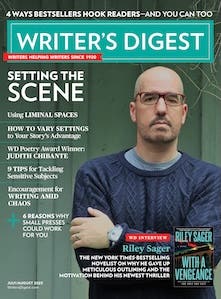Harnessing Mythic Power in Your Writing: The Storytelling Masters and Their Lessons
Thomas Maltman, author of the acclaimed 2013 novel, LITTLE WOLVES, explains how storytelling lessons of the past helped him find his agent and get published.
The word adventure a student once told me after she’d studied the word’s etymology, means something that is about to happen to someone. I’ve never forgotten that definition because it means that anyone of us anywhere can experience extraordinary things. Our oldest storytellers understood this, a truth as ancient as Anglo Saxon scops singing for an audience in the meal hall, but your own call to adventure happens when you pick up the pen and hazard the blank page.
Titanic. Pulp Fiction. Lord of the Rings. The Lion King. Dances with Wolves. Witness. All of these blockbuster movies share a similar plot structure that any writer can employ to add layers of powerful meaning and depth to the art of storytelling. The greatest stories of all time, including those of religious leaders such as Buddha, Jesus, and Mohammed, all follow a pattern. Understanding such structures will help shed light on your own stories. Learning to harness the power of these “myths” in your own writing may help you achieve your writing dreams.
Order a copy of Thomas Maltman's Little Wolves today.
Joseph Campbell’s groundbreaking 1948 work, The Hero with a Thousand Faces first identified common patterns in great myths of legends. Applying mythic structure to your story, way frees you from the ultra-linear model of crisis, rising action, and resolution, and may help you understand where your novel or short story needs to go.
“Furthermore we do not have to even risk the adventure alone; for the heroes of all time have gone before us; the labyrinth is thoroughly known; we have only to follow the thread of the hero-path. --Joseph Campbell, The Hero with a Thousand Faces
In The Writer’s Journey: Mythic Structure for Writers, Christopher Vogler reminds us that mythic structure is a “form not a formula.” There are infinite variations in how a writer might use the structure, first described like in Campbell’s seminal work:
- Ordinary World
- Call to Adventure
- Refusal of the Call
- Meeting the Mentor (Wise Old Man or Woman)
- Crossing the First Threshold
- Test, Allies, Enemies
- Approach to the Inmost Cave
- Supreme Ordeal
- Reward (Seizing the Sword)
- The Road Back
- Resurrection
- Return with the Elixir
You might glance at a list like this and wonder how in the world it belongs in realistic contemporary fiction. Consider one example:
Nothing extraordinary happens in Charles Baxter’s story “Snow” and yet I return to it each semester I teach fiction, because there is a mythic potency in the undercurrents of the plot. It opens with a boy combing his hair, bored out of his mind. His older brother Ben, home from military school, asks him to come along to see a car trapped under the ice. They pass the first threshold, lying to their mom and dad about where they’re headed. It’s clear that the older brother is a mentor, a world-wise figure who even owns a real sword, and even better, a “1952 Rocket 88.” They pick up Ben’s girlfriend on the way out to the lake and she holds the boy’s hand during the trip. They journey to another world, a world of ice where they see the car suspended: “Dimly lit, but still visible through the murk, it sat down there, its huge trunk and the sloping fins just a bit green in the algae-colored light.” Here, they brush up against mortality, the chance of death, and the boy has a vision about his brother, about what life is, and when he returns to the world he is changed by what he saw.
The story is marvelous for its evocation of a time period, the 1950’s, and place, the Great Lakes region of the Upper Midwest, but I would argue that what gives it power is its structure. Look at the story closely and you see that it follows the same mythic pattern as some of the greatest stories of all time, a pattern that is inescapable to human communication. Did Charles Baxter intend this? Maybe. Maybe not. What matters is that the pattern is there and if we understand it we can also use it to our own advantage.
As a graduate student in the MFA program at MSU, Mankato I studied Joseph Campbell in a class about mythic structure, frustrated with my novel at the time. I began to see connections between my novel in this structure, ways my characters were being called out of the ordinary world, meeting mentors, and crossing thresholds. It transformed how I saw the process, and transformed my story for the better. I believe that my novel succeeded and found a publisher and an enthusiastic response from audiences exactly because of this structure underneath it. Because ultimately that’s what we hope to create as writers, a reading experience that will take readers to a far place, that will call them to leave behind their own ordinary worlds. The adventure is waiting, if only we have the eyes to see.
Thomas Maltman's essays, poetry, and fiction have been published in many literary journals. He has an MFA from Minnesota State University, Mankato. His first novel, THE NIGHT BIRDS, won an Alex Award, a Spur Award, and the Friends of American Writers Literary Award. In 2009 the American Library Association chose it as an “Outstanding Book for the College Bound.” He’s taught for five years at Normandale Community College and lives in the Twin Cities area. LITTLE WOLVES (Soho Press), his second novel, made the Jan. 2013 Indie Next List and is an Amazon Book of the Month for January 2013.


